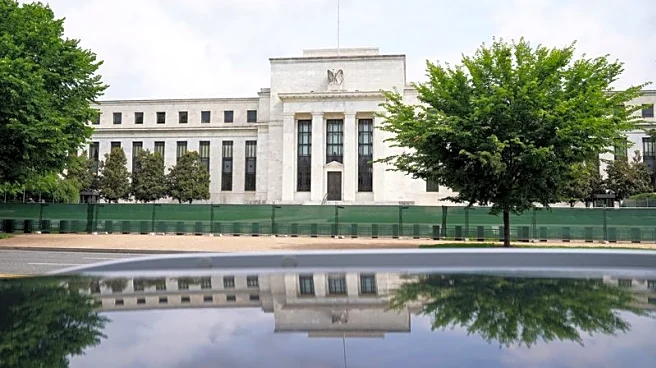What is the story about?
What's Happening?
The U.S. Bureau of Labor Statistics has announced a significant revision to payroll data, indicating that the U.S. economy added 911,000 fewer jobs over the 12 months ending in March than previously estimated. This adjustment suggests a slowdown in job growth, with monthly averages reduced by approximately 76,000 jobs. The revision follows a period of moderate job growth and may prompt the Federal Reserve to consider interest-rate cuts. Fed Chair Jerome Powell has acknowledged increased risks to the job market, and traders anticipate potential rate cuts at the upcoming Fed meeting.
Why It's Important?
The downward revision in job growth figures underscores potential vulnerabilities in the U.S. labor market, which could have broader economic implications. A slowdown in job creation may influence monetary policy decisions, with the Federal Reserve potentially opting to lower interest rates to stimulate economic activity. This adjustment could affect various stakeholders, including businesses, investors, and policymakers, as they navigate a changing economic landscape. The revision also highlights the importance of accurate labor data in shaping economic strategies and decisions.
What's Next?
The Federal Reserve is expected to address the revised job growth figures in its upcoming meeting, with potential interest-rate cuts on the agenda. Stakeholders will closely monitor the Fed's actions and statements, as they could signal shifts in economic policy aimed at supporting job growth and stabilizing the labor market. Additionally, the final payroll figures are due early next year, which may provide further insights into the labor market's trajectory.
AI Generated Content
Do you find this article useful?
















